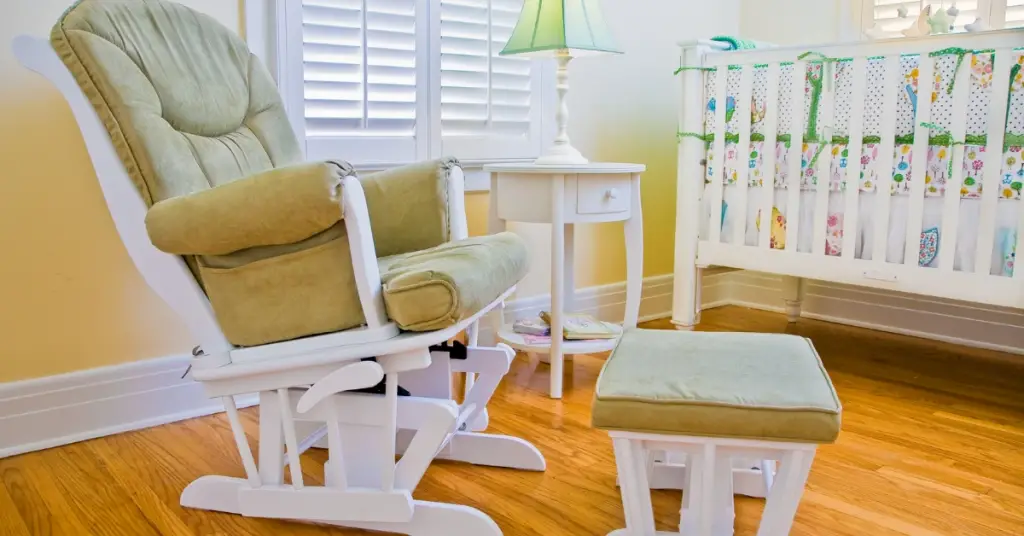Wondering if you should use diaper cream every time you change your baby’s diaper? Here’s what you need to know.
The products mentioned on this page were independently selected by Babycious editors. As an Amazon Associate, Babycious may earn a commission from qualifying purchases.

Photo by Sarah Chai
Changing diapers is a learning curve for any new parent. There are so many things to think about – what kind of diapers to use, how often to change them, and whether or not to use diaper cream at every change. If you’ve ever had to deal with a diaper rash, you know how painful and unpleasant it can be for your little one. If not, looking into how to prevent diaper rash is a very good idea since learning the best practices of diaper changing can save you a lot of hassle down the road.
So, the question is, should you be using diaper cream at every change?
Using diaper cream is not necessary at every single diaper change. If your baby is not irritated (showing redness) down there, only use diaper cream after you change a poopy diaper and for overnights or when you won’t be able to change the diaper frequently. The most important thing is to always dry the area before closing in the new diaper.
When it comes to using diaper cream, there are a few things to consider. First, how a diaper cream works, and what ingredients it usually has? How prone your baby is to rashes? How to use diaper cream efficiently when dealing with a rash? and what is the best way you can prevent rashes from happening in the first place?
How Diaper Creams Work
Diaper creams, also known as “barrier creams” work by creating a physical moisture barrier between your baby’s skin and their wet or soiled diaper. This barrier seals out the wetness and keeps the skin hydrated, reducing the potential for irritation and diaper rash.
Although the purpose of all diaper creams is to act as a defense layer against wetness, they don’t all use the same ingredients to achieve this. While researching for this article, I have come across three main categories of diaper creams that use different active ingredients :
- Zinc Oxide Based Diaper Creams. Zinc Oxide is a white mineral that has been used for centuries in a variety of products, from sunscreen to diaper rash cream. It is an ingredient that is classified as safe and effective by the FDA so you can use this type of cream safely for your baby either in small dosages (like Desitin Daily Defense 13% zinc oxide) as a preventive measure or in maximum strength (like Desitin Maximum Strength 40% zinc oxide) as a treatment for diaper rash.
- Petrolatum-Based Diaper Creams. Petrolatum also known as petroleum jelly works as an occlusive ingredient, meaning that it seals out wetness and moisturizes the skin. It has no known health concerns for external use and it is considered safe for babies. The most widely used diaper cream that has this active ingredient is Aquaphor which is made of 41% Petrolatum. You can also use some plain old Vaseline which contains 100% Petrolatum if you choose the original formula product.
- Organic Diaper Balms and Ointments. You can also find some diaper creams that don’t include zinc oxide or petrolatum and instead rely on a mixture of plant-based oils and waxes to create the barrier. The most popular product in this category is Earth Mama Organic Diaper Balm which I personally love because it’s so gentle on baby’s bottom and doesn’t leave any residue unlike other types of diaper creams.
All these diaper creams are aimed at protecting your baby’s skin against irritation and rashes and you can feel safe using them on a daily basis. Just remember that you don’t have to use them at every single diaper change, only when you feel like your baby’s bottom needs extra protection or :
If Your Baby is Prone to Rashes
If your baby is particularly prone to rashes (AKA starts to get red as soon as you skip diaper cream), you might want to use a diaper cream more frequently as a preventive measure. But even then, slathering thick layers of diaper cream on your baby’s bottom at every diaper change is not enough. You need to first look for what causes the rash and try to eliminate the source before you reach for the diaper cream. Here are the usual suspects when it comes to rashes :
The Diaper Brand / Type
The most common culprit for diaper rash is actually the diapers you are using. Your baby may just be reacting to the particular product you are using.
There are no right or wrong choices here, what works for one baby may not work for another. A trial and error process is often the only way to find the right diaper for your baby but you’ll likely find better luck with diapers that are hypoallergenic and free of fragrances. I’ve found that Huggies are among the most gentle and least likely to cause rashes for my daughter.
The Wipes
Some babies are just sensitive to all types of wipes, even the ones that are marketed as gentle and fragrance-free. The most effective alternative if your baby is sensitive to wipes is to use only water to clean your baby’s bottom. You can clean your baby under running water or just wet a soft washcloth with water to do the job.
You can also use WaterWipes which are water-based wipes that are ultra-gentle and practical for diaper changing on the go or when you don’t have access to water.
Changes in Diet
Sometimes, what your baby eats can cause rashes. If you suspect that this is the case, take a look at your baby’s diet and see if there are any new foods that could be causing the problem. If you’re breastfeeding, pay attention to what you eat as well because certain foods can pass through your milk and cause problems for your baby.
Common offenders when it comes to diaper rash are citrus fruits, tomatoes, strawberries, chocolate, spicy food, nuts, and cow’s milk.
Not Changing Diapers Often Enough
If you’re not changing your baby’s diaper often enough, they will be sitting in a wet or soiled diaper for too long and this will eventually lead to a rash even if you’re using diaper cream. It’s important to change your baby’s diaper frequently, especially when they are younger and producing more frequent bowel movements.
If you have a “stealth pooper” (meaning that your baby doesn’t give any warning signs when pooping and continues on as if nothing happens), set a timer for every 2-3 hours to remind you to check their diaper and change it if necessary.
Not thoroughly Drying Your Baby’s Bottom
This is such an important step when changing your baby’s diaper and many parents are not aware of how it can contribute to a rash. If you don’t thoroughly dry your baby’s bottom after each cleaning before applying diaper cream, you may accidentally lock in moisture which can then lead to a rash.
To thoroughly dry your baby’s bottom you can:
- pat dry with a clean cloth.
- quick blow dry using a hair dryer.
- use a little stroller fan. (my go-to method because it has flexible feet and it has a perfect tabletop size).
- let your baby lay diaper-free on the changing table for a couple of minutes to dry before putting the new diaper on (if you have time to spare).
Whatever method you choose, just make sure you don’t skip this step!
Your Baby just has Very Sensitive Skin
If you’ve tried everything and your baby is still getting rashes, it could just be that they have very sensitive skin and need to waterproof their bottom all the time and that’s okay!
Anything to prevent a diaper rash is ten times better than trying to treat it.
To use diaper cream preventively, apply a small amount of cream to your baby’s bottom at every diaper change. Using a diaper cream spatula is a game changer if you’re going to use diaper cream at every diaper change especially since it comes with a case for easy storage and portability.
Bottom Line
Rashes are very unpleasant to deal with, but fortunately, there are many things you can do to prevent them. If you find that your baby is prone to rashes, make sure you troubleshoot the root cause and take the necessary steps to prevent them.
Using diaper cream at every change can help if your baby has sensitive skin but it’s also important to eliminate whatever it is that is causing the rash in the first place.
The purpose of this article is informative and educational only. It’s not a substitute for medical consultation or medical care. We do not accept any responsibility for any liability, loss, or risk, personal or otherwise, incurred as a consequence, directly or indirectly, from any information or advice contained here. Babycious may earn compensation from affiliate links in this content.



